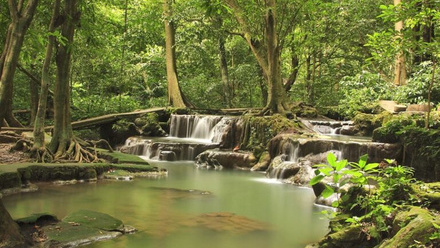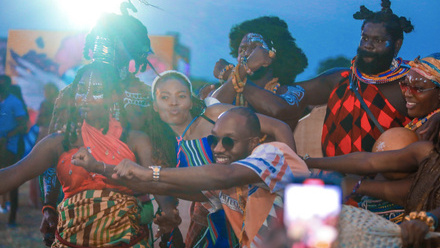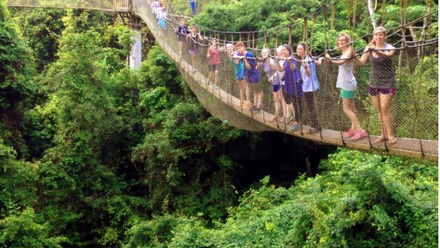Located on Africa’s west coast, adjacent to the Gulf of Guinea and the Atlantic Ocean to the south, Ghana is pretty much at the centre of the world, being both close to the equator and on the Greenwich Meridian. Often referred to as “Africa for beginners” because it’s a safe, welcoming country with a tropical climate and a swathe of attractions. Visitors flock to top destinations - nature reserves teeming with wildlife, stunning beaches, waterfalls, caves and lakes, vibrant cities and markets and a rich cultural history with castles, forts and World Heritage Sites.
Website | Facebook | Instagram | YouTube | Twitter
Must See / Do
Mole National Park
Home to herds of elephants (a popular attraction) leopards and rare birds including the white-backed vulture with a rich and diverse abundance of mammals, birds, reptiles and plants – Mole is a wonderful destination for walking and drive safaris.
Kakum National Park
Less than an hour’s drive north of Cape Coast, lies one of the most popular wildlife destinations in Ghana. Kakum National Park protects the core of the country’s remaining rainforests and features a very popular attraction: a canopy walkway that extends 40m above the forest floor.
The Volta Region
On the eastern border of Togo, lies the Volta region. This a spectacularly scenic area of rolling hills, valleys, rocky outcrops with the biggest man-made lake in the world, Lake Volta and its lagoons, waterfalls and rivers.
Cape Coast
One of 40 slave castles or forts built by European traders on the Gold Coast of West Africa to hold slaves before they were shipped to the Americas and Caribbean, Cape Coast Castle is an important historical site and is aptly included on the UNESCO World Heritage list.
Regions
 Cape Coast
Cape Coast
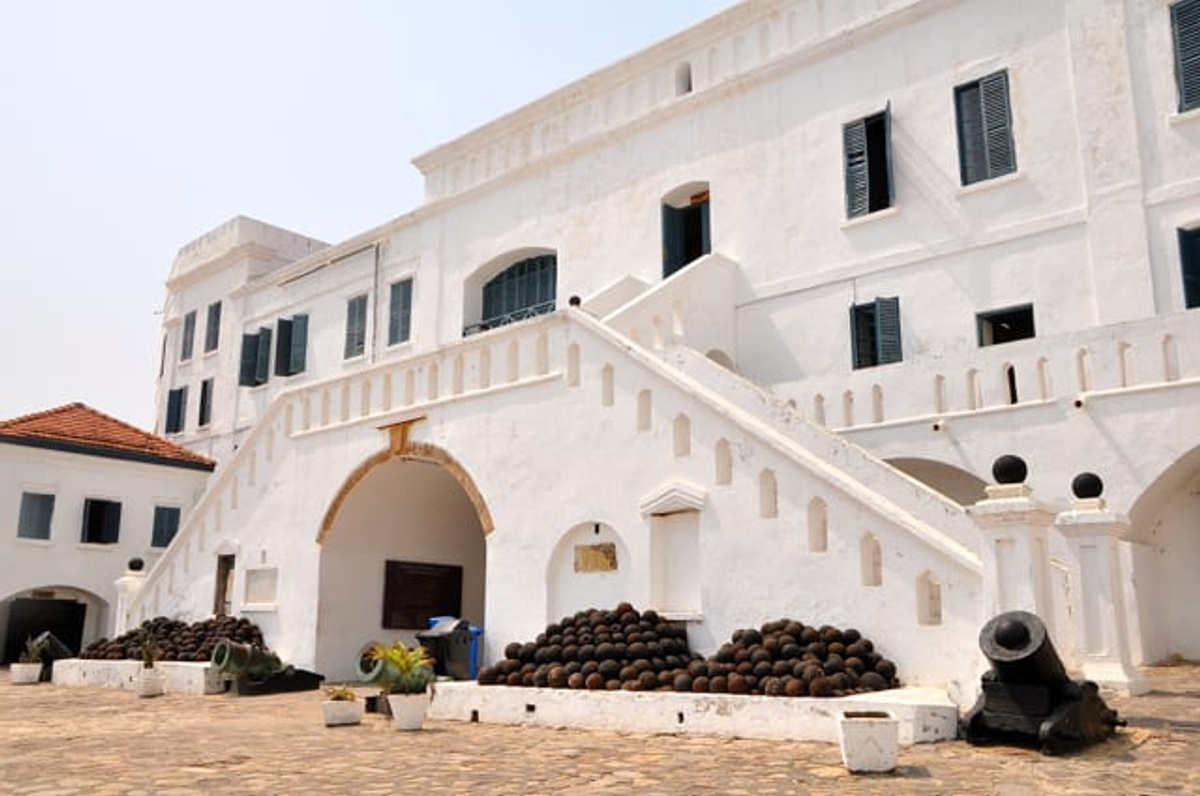
One of 40 slave castles or forts built by European traders on the Gold Coast of West Africa to hold slaves before they were shipped to the Americas and Caribbean, Cape Coast Castle is an important historical site and is aptly included on the UNESCO World Heritage list. Located along the coast from Accra, visitors can take a guided tour of the dark, damp dungeons and the museum on the first floor. Elmina Castle, the oldest castle in sub-Saharan Africa also used in the slave trade is a few miles away.
 Mole National Park
Mole National Park

With its entrance near the town of Larabanga, situated in the Savannaland Tourism Destination Area covering an expanse of undisturbed Guinnea savannah and forest in the north of Ghana, Mole is the country’s largest protected parks. Home to herds of elephants (a popular attraction) leopards and rare birds including the white-backed vulture with a rich and diverse abundance of mammals, birds, reptiles and plants – Mole is a wonderful destination for walking and drive safaris.
 Kakum National Park
Kakum National Park
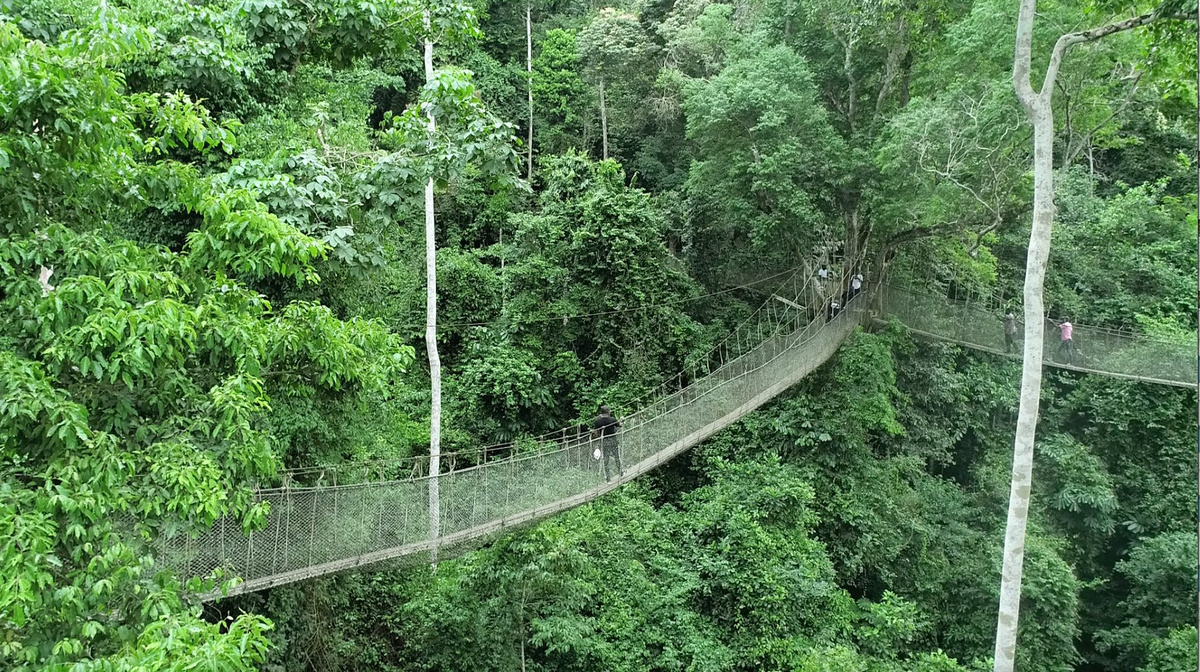
Less than an hour’s drive north of Cape Coast, lies one of the most popular wildlife destinations in Ghana. Kakum National Park protects the core of the country’s remaining rainforests and features a very popular attraction: a canopy walkway that extends 40m above the forest floor. With 100 different mammal species including the forest elephant, leopards, monkeys and over 650 species of butterfly, more than in the whole of Europe, this park is ideal for guided walks and is a paradise for nature lovers.
 Kejetia Market
Kejetia Market
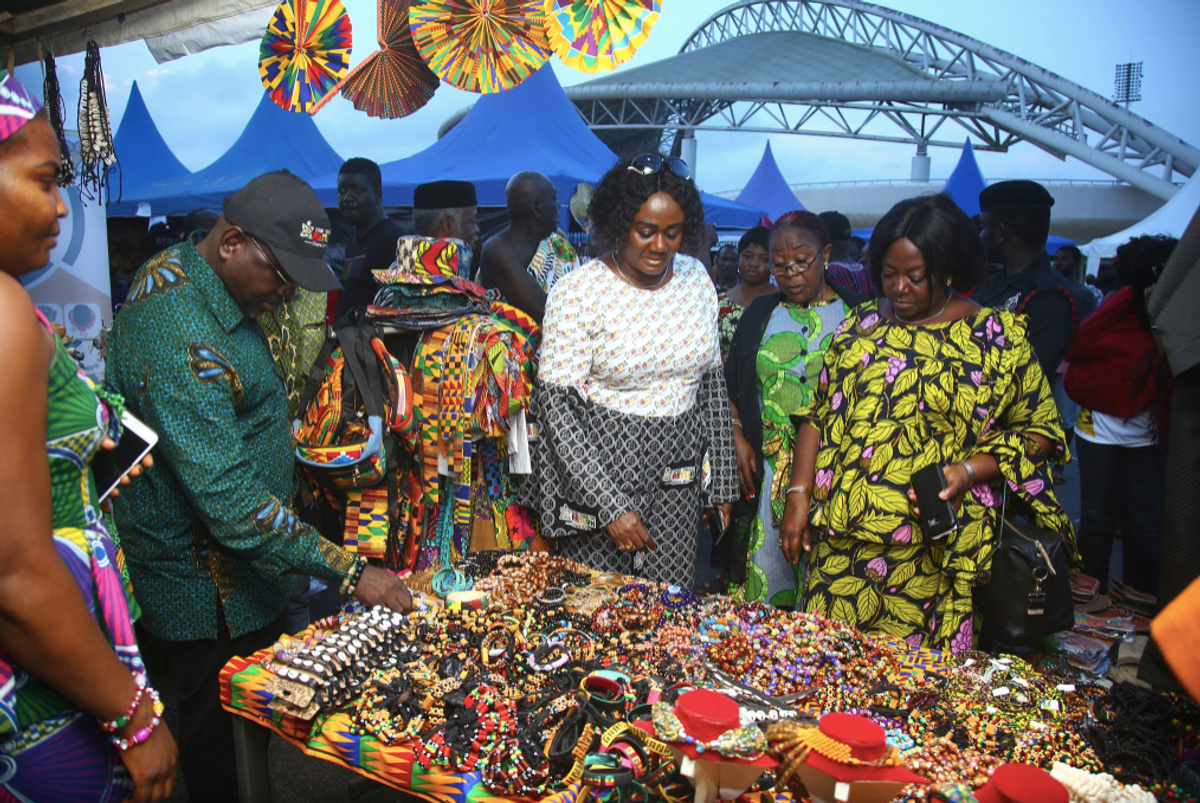
The largest single market in West Africa, The Kejetia Market (also known as the Kumasi Central Market) is an open-air market in the city of Kumasi located in the Ashanti Region, in southern Ghana. Famed for gold jewellery, Kente cloth and wooden stools and an array of handmade wares, this market bustles with 11 000 vibrant stalls and is a tourist’s delight. Close by, the awe-inspiring Manhiya Palace Museum is a worthwhile cultural experience sharing the history of the Ashanti Kingdom.
 Accra
Accra

Described by the New York Times as “Africa's Capital of Cool” Accra is famed for its contemporary art, colourful textiles, vibey nightlife and cultural heritage sites. Attractions include the Kwame Nkrumah Mausoleum dedicated to Ghana’s first president, the family friendly Aburi Botanical Garden for hiking, bicycling and picnicking, the popular Labadi Beach for horseback riding and water sports, The Dubois Centre for insight into Panafrican culture and a shopping trip to Makola Market.
 The Volta Region
The Volta Region
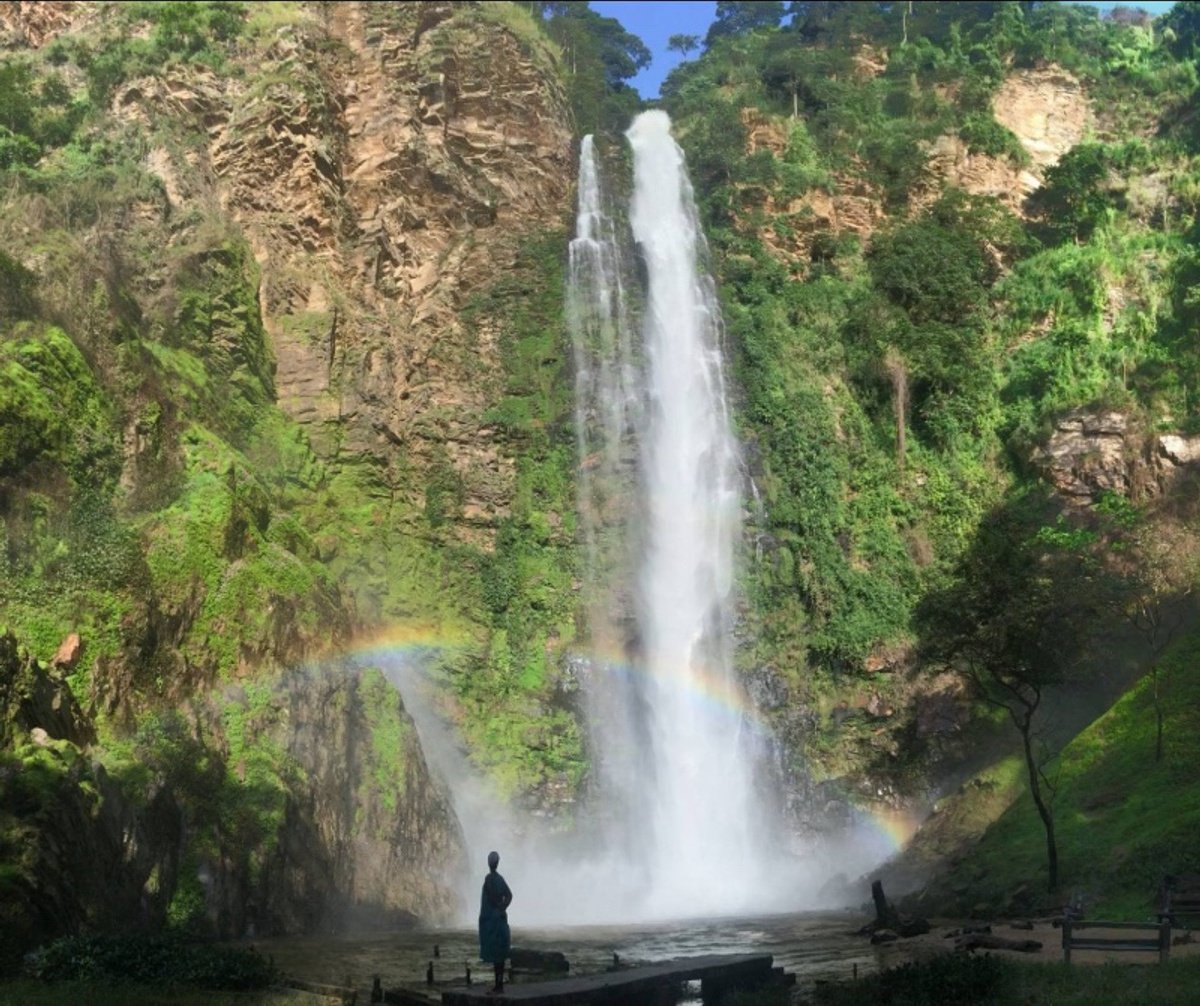
On the eastern border of Togo, lies the Volta region. This a spectacularly scenic area of rolling hills, valleys, rocky outcrops with the biggest man-made lake in the world, Lake Volta and its lagoons, waterfalls and rivers. Mount Afadjato and the Wli Waterfalls offers a key attraction for hikers with epic trails, wonderful views and pools. Wildlife sightings include hippo, crocodiles, sea turtles. Another popular spot is the Tafo Atome Monkey Sanctuary and Cultural Village.
 Ada Foah
Ada Foah
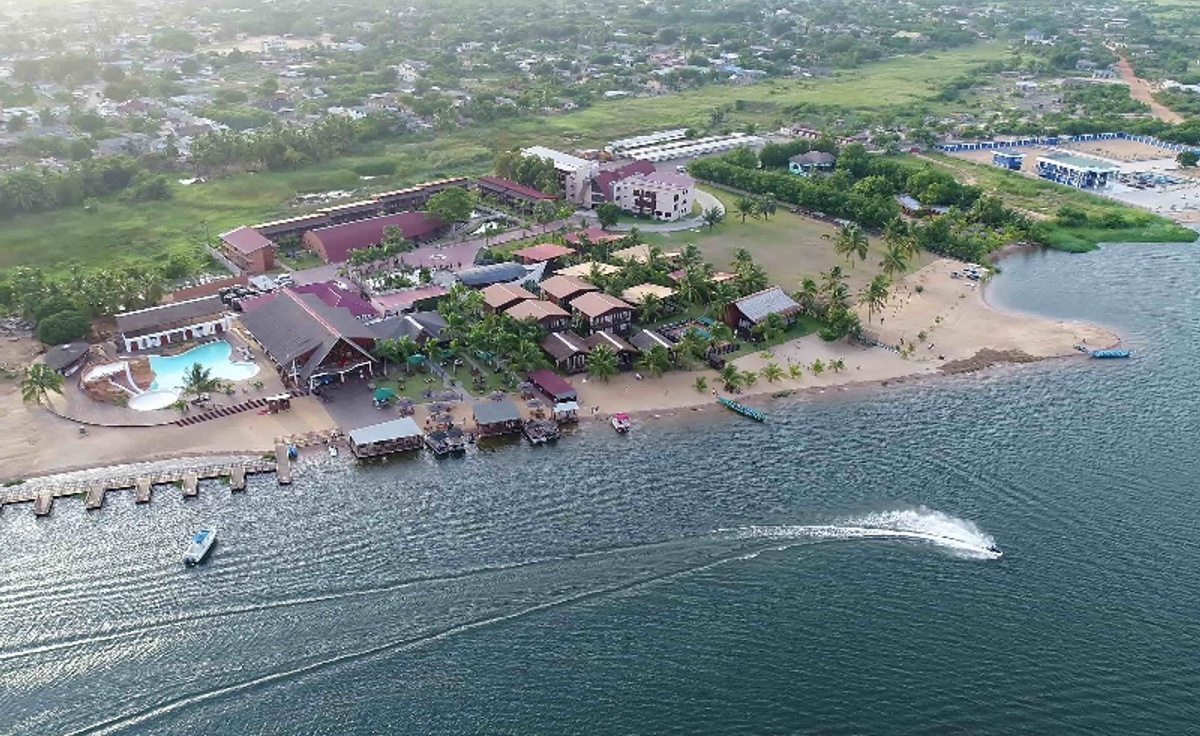
Where the Volta River joins the Atlantic Ocean is a remote stretch of palm-lined coastline and the Songor Lagoon and estuary islands where marine turtles breed and birds, monkeys, pelicans and crocs thrive. The vibrant seafront town here is Ada Foah. The coastal landscape makes it a haven for watersports including boat tours, kayaking and canoeing, waterskiing and jetskiing, fish charters. The tropical paradise of Ada Foah is ideal for adventure lovers and nature enthusiasts.
 Tamale
Tamale

The capital city of the north, Tamale is a bustling city with a wonderful blend of modern and traditional Islam architecture, some dating back 150 years. The Tamale Central Mosque is a highlight for visitors with its green-topped minaret. Other local attractions include The Centre for National Culture, The Central Market and Kukuo Pottery Village. The city hosts top traditional cuisine, art and cultural delights. A short distance from Tamale is The Mole National Park with its majestic elephants and leopards.


